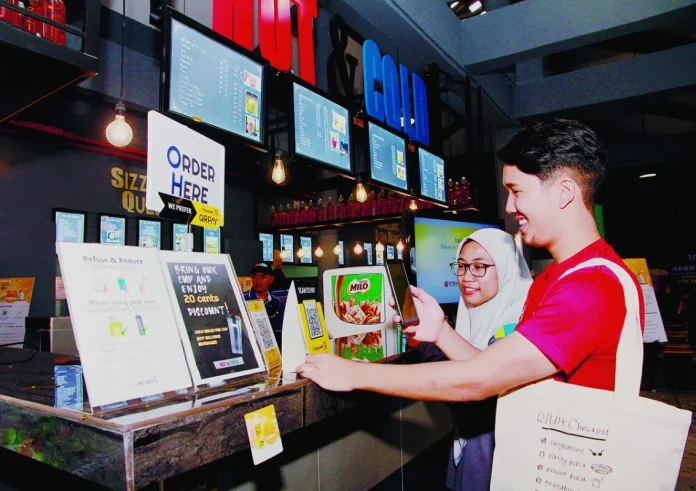The soul of the mamak stall: balancing digital efficiency with human connection
THERE is a particular kind of magic in the ritual of a mamak stall. It is not just in the first blissful sip of teh tarik – its sweet frothy top cooling the hot strong tea beneath – or even in the perfect messy tear of a roti canai dipped into a puddle of steaming curry. The real magic is in the interplay of human interaction that brings it to your table.
You walk in, you catch the eye of the waiter, a familiar face you have seen for years. You shout your order, “teh tarik kurang manis, satu roti canai banjir!” He nods, maybe shouts a confirmation back – a quick, smiling exchange that affirms you are known, you are a regular and you belong.
Minutes later, he weaves through the crowded tables with a practised grace, placing your order before you with a clatter. You take that sip and nod in appreciation. He sees it, offers a small smile in return and walks away, a silent transaction of mutual respect completed. This is the mamak’s soul.
Now, enter the QR code. A small, black-and-white square, pasted conspicuously on the table, has replaced that familiar face. The ritual is now a silent, solitary affair. You scan, scroll through a digital menu on your phone, tap your selection, key in your table number and you pay online.
The only person you speak to is the cashier, and even that interaction is reduced to a transactional, “I’ve paid”. You return to your seat, waiting for a digital queue number to flash on a screen. When it does, you walk over to a collection counter, where a busy hand, often without eye contact, passes you your roti canai banjir and teh tarik.
The food is the same but the experience is a ghost of its former self. The warmth has been replaced with efficiency. The familiar smile has been displaced by the cold glow of your screen. We have gained speed and perhaps accuracy but we have lost a colourful play of human connection in our lives.
This is not just about mamak stalls; this digital conundrum is weaving itself into every facet of our lives, and the pace is dizzying. It is true what they say: if you were to fall into a coma for a mere week, you may awaken to a world whose basic rhythms may feel alien.
Consider money – the crisp rustle of paper notes and the weight of coins in your pocket – these are becoming relics. We now live by the mantra of “scan and pay”. A hawker selling cendol, a farmer at a roadside stall, a youngster running a makeshift coconut shake stand all display QR codes.
Paper money, which once held tangible value and a history in every crease and tear, is now seen by many as inconvenient, even dirty. Its worth, once both monetary and sentimental, is a fact we are rapidly forgetting.
In the near future, a physical ringgit may be as unknown to a child as a floppy disk is today.
Think of our daily journeys. We no longer hail a taxi with an outstretched arm and a hopeful glance, instead we summon a car with a tap on an app, tracking a faceless driver’s icon as it moves across a digital map.
We don’t browse video stores, chatting with the clerk about a new release; we scroll through endless digital libraries on streaming platforms, algorithms silently dictating our choices.
There is no denying the convenience – it is seamless, efficient, and for a generation born into it, it is simply the way the world works. We can do our banking at midnight, order groceries without leaving our couch and connect with friends across the globe in an instant.
But this progress comes at a cost, a quiet erosion of the human touch. We are outsourcing our interactions to interfaces. The brief cheerful chat with the waiter, the shared laugh with the cashier over a dropped coin, the simple act of looking someone in the eye and conveying a need – these micro-moments of connection are the glue that holds our society together. They remind us that we are part of a community, not just individual users in a web of Apps and systems.
As we stand at this crossroads, the question is not whether to progress but how to do so without losing our soul.
The digital world offers incredible tools but it must not become a wall that separates us.
Perhaps the answer lies in a conscious balance. Perhaps the mamak stall of the future can have both the QR code for the hurried customer and open counters for the regulars who still want to shout their orders and share a smile.
Because the froth on a teh tarik will eventually settle, the steam from the curry will dissipate but the memory of a genuine human smile and the feeling of being recognised and valued is a warmth that no digital efficiency can ever replicate.
As we rush headlong into this new world, let us ensure we do not leave that warmth behind.
So, the current debate about QR codes in mamak has made me think and rethink what we have become.
Dr Bhavani Krishna Iyer holds a doctorate in English literature. Her professional background encompasses teaching, journalism and public relations. She is currently pursuing a second master’s degree in counselling. Comments: letters@thesundaily.com







